Working in the lab is often one of the most exciting parts of science class. But with great excitement comes great responsibility! To keep things safe, there are some rules every single lab user needs to follow. Of course you’ll attempt to ingrain these lab safety rules into their minds at the beginning of the semester, but you can’t be too careful when it comes to dangerous chemicals and sharp tools.
That’s why we’ve created these free printable posters. Hang them around the lab and review them regularly so students experience hands-on learning in the safest possible way.
1. Dress appropriately, remove dangling jewelry, and tie up long hair.
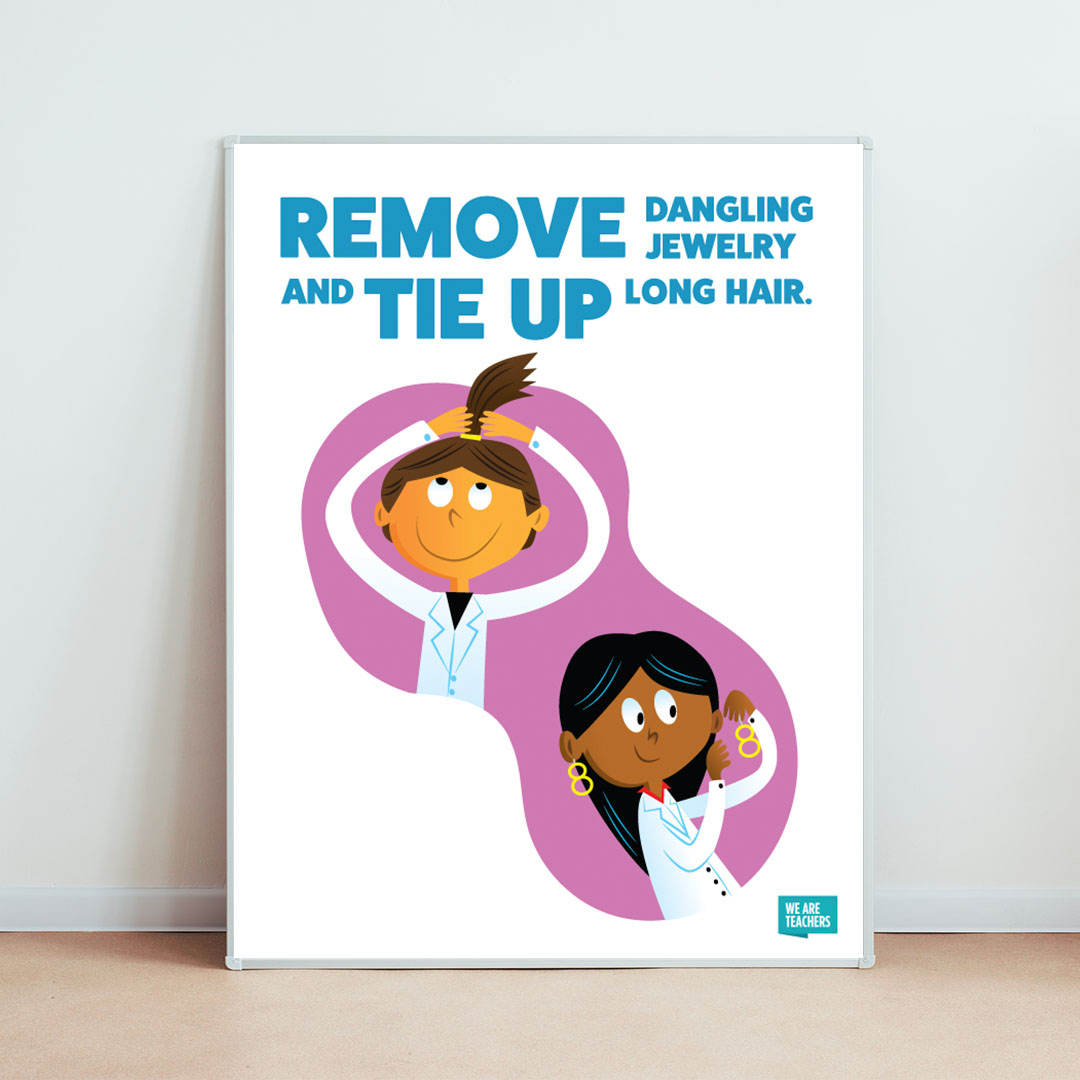
WeAreTeachers
Professional scientists often wear lab coats, but your students probably don’t have these. This might mean they need to roll up loose or flowing sleeves and take off bracelets, rings, or long necklaces. Make sure they secure long hair, too, so it doesn’t accidentally dip into chemicals or get too near a Bunsen burner.
2. Wear required safety equipment properly at all times.
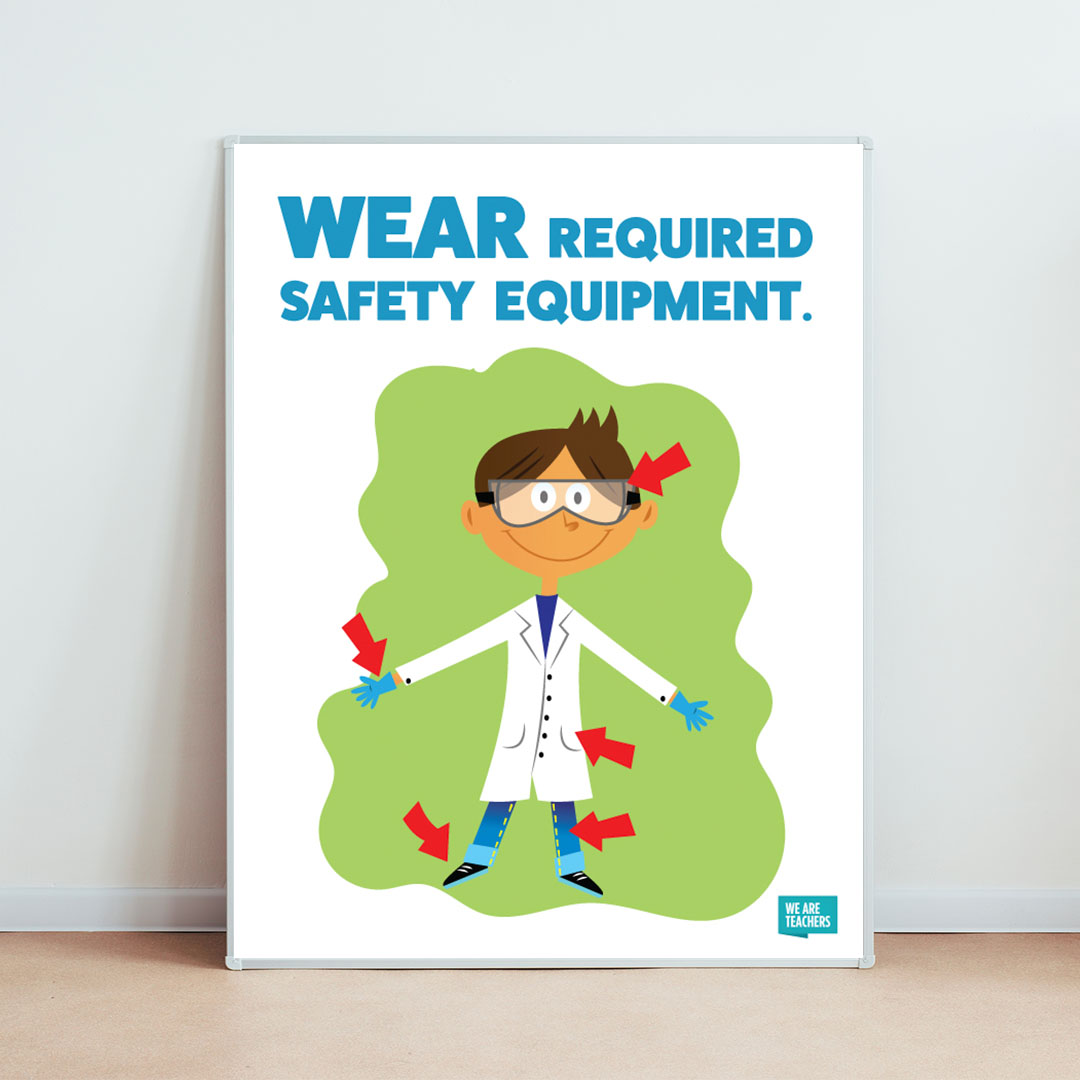
WeAreTeachers
You’re going to get some pushback on this one, especially from older kids who think the safety goggles make them look goofy. But this generation should already know how (and why) to wear a face mask, and they can follow the same rules for goggles or gloves.
3. No food or drink in the lab area.
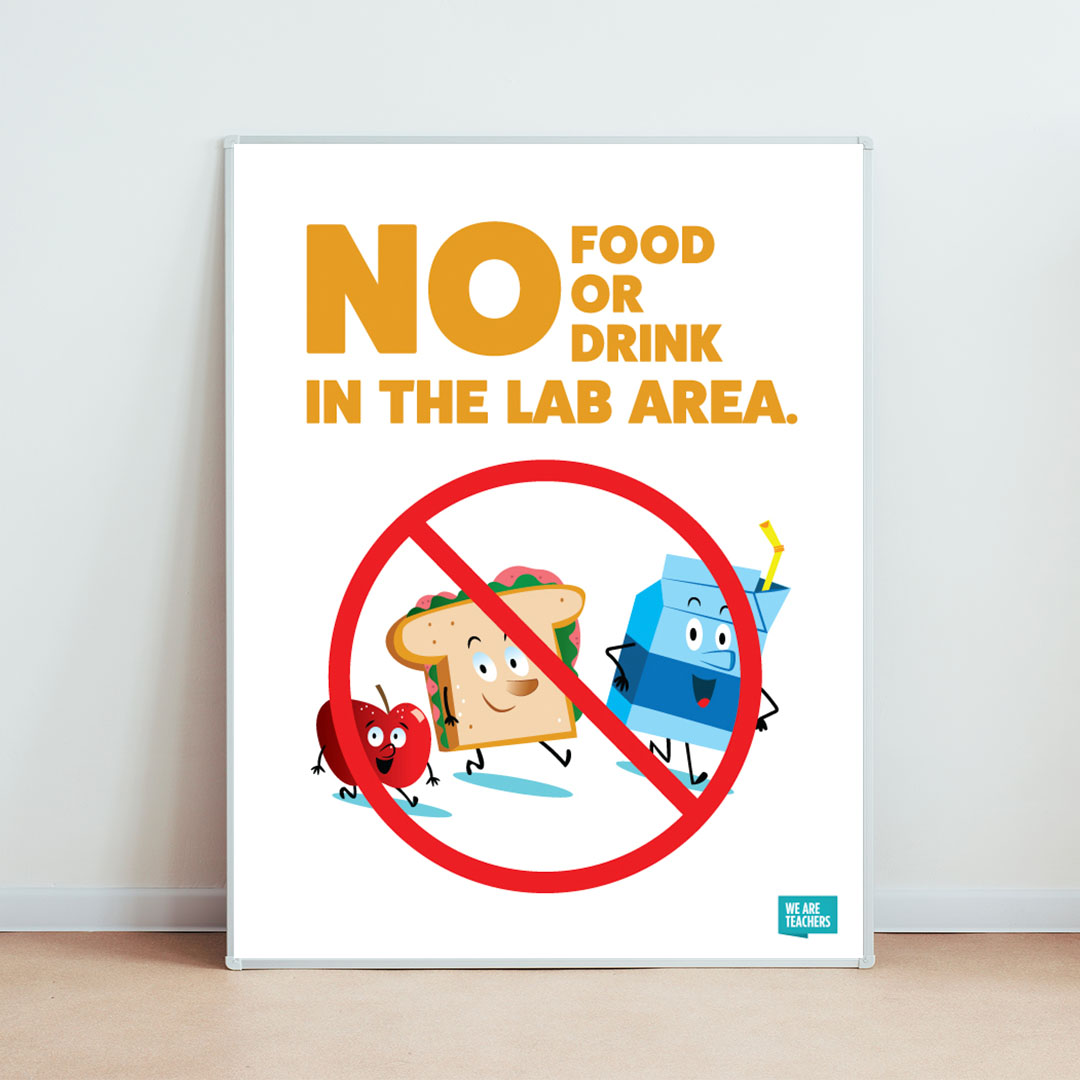
WeAreTeachers
This includes water bottles! There are just too many opportunities for cross-contamination. Provide students with cubbies or room at their desks to store items like these, and allow breaks as needed for them to step away from their lab tables for a water break or quick snack.
4. Don’t sniff, taste, or touch chemicals or other supplies.
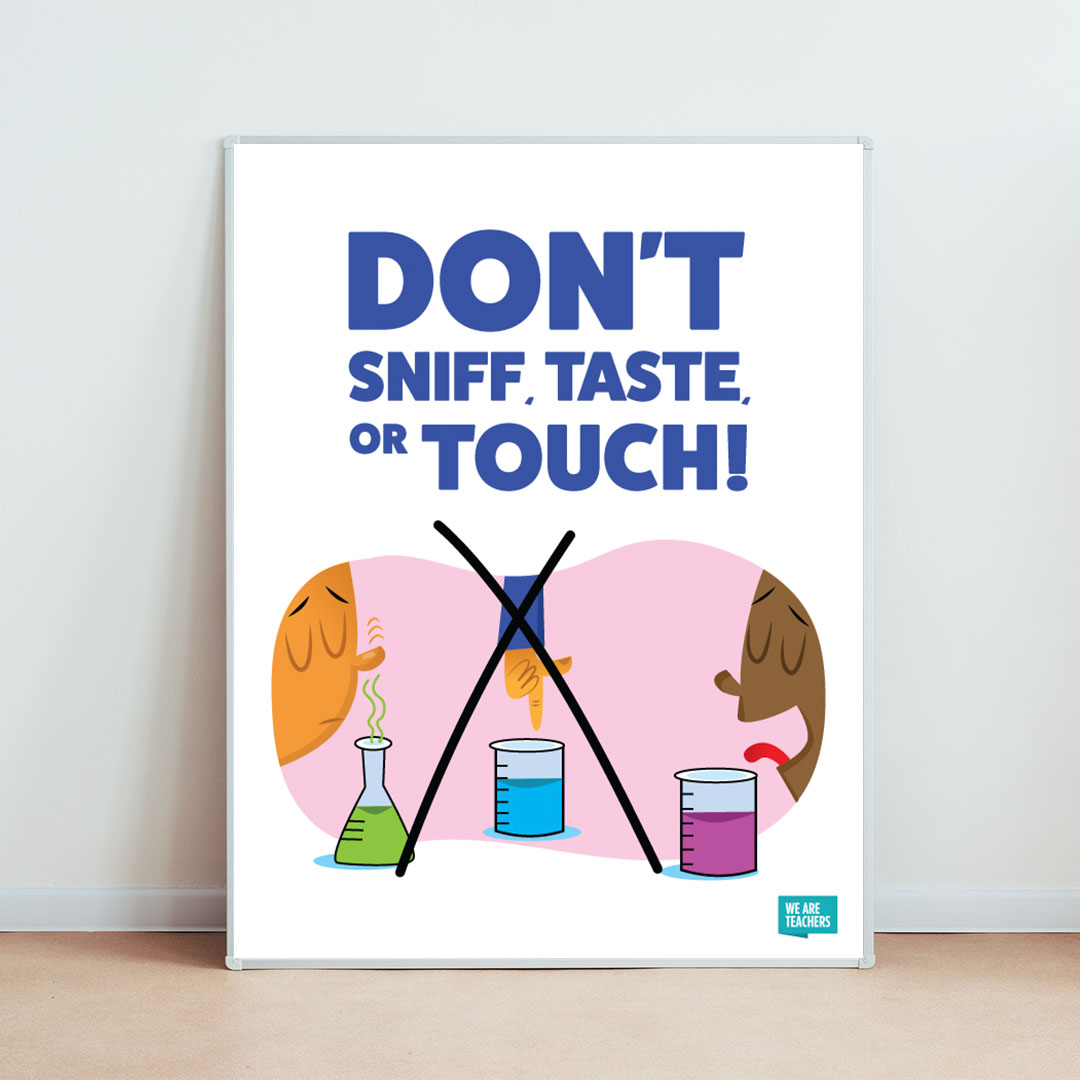
WeAreTeachers
Most kids probably won’t try to taste random things, but there are always one or two who just have to try. Be sure students know that it’s not only tasting things that can cause serious problems. Even sniffing vapors can be risky, and many chemicals can cause skin reactions or worse. If they don’t believe you, show them a few pictures of people who didn’t follow this important rule.
5. Know where to find and how to use emergency equipment.
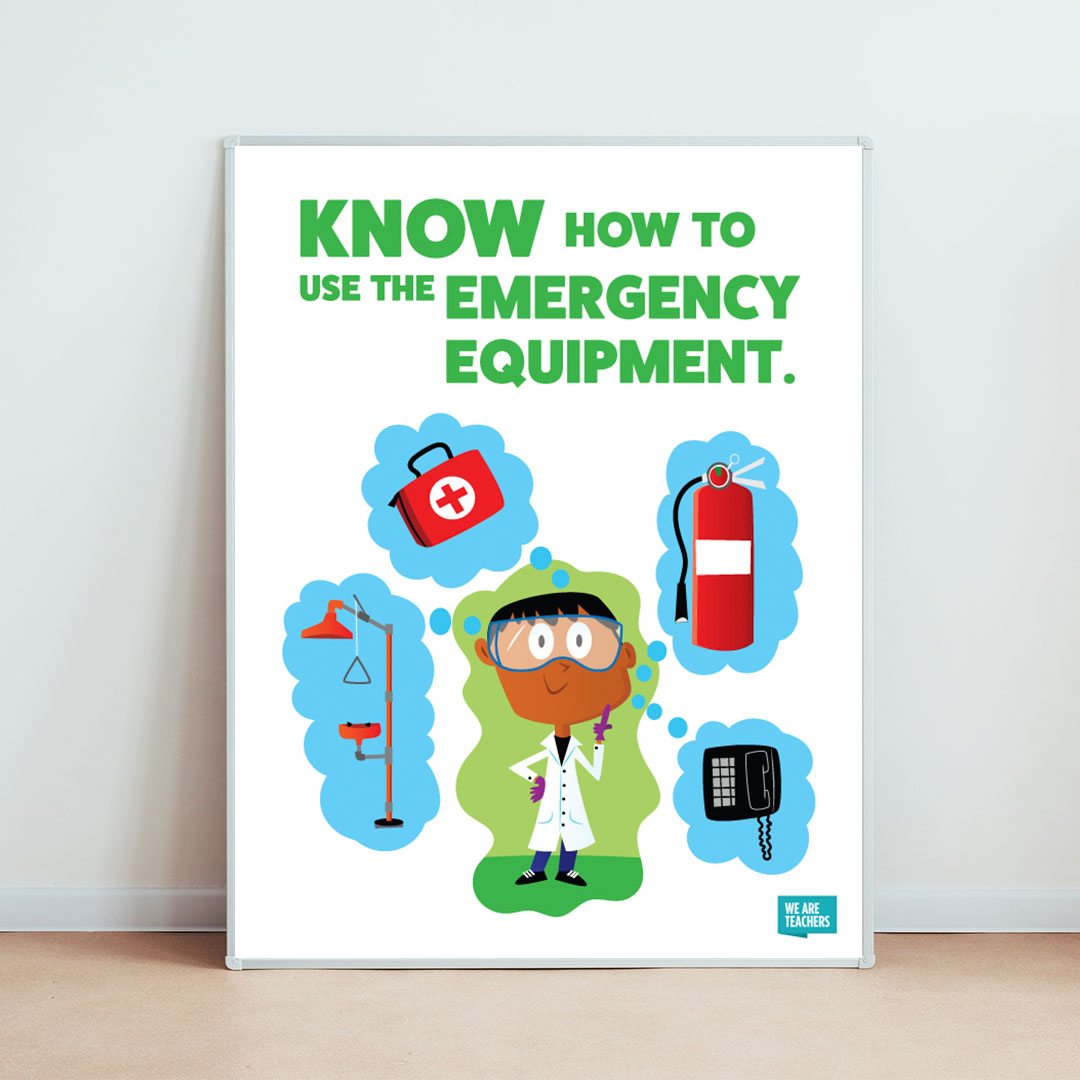
WeAreTeachers
Every student should learn where you keep fire extinguishers, eyewash stations, and other safety equipment on their very first visit to the lab. Provide some practice using these when possible, or show video demos instead. Regularly review the locations of safety equipment so kids don’t forget about it over time.
6. Report any spills, accidents, or broken items to your teacher immediately.
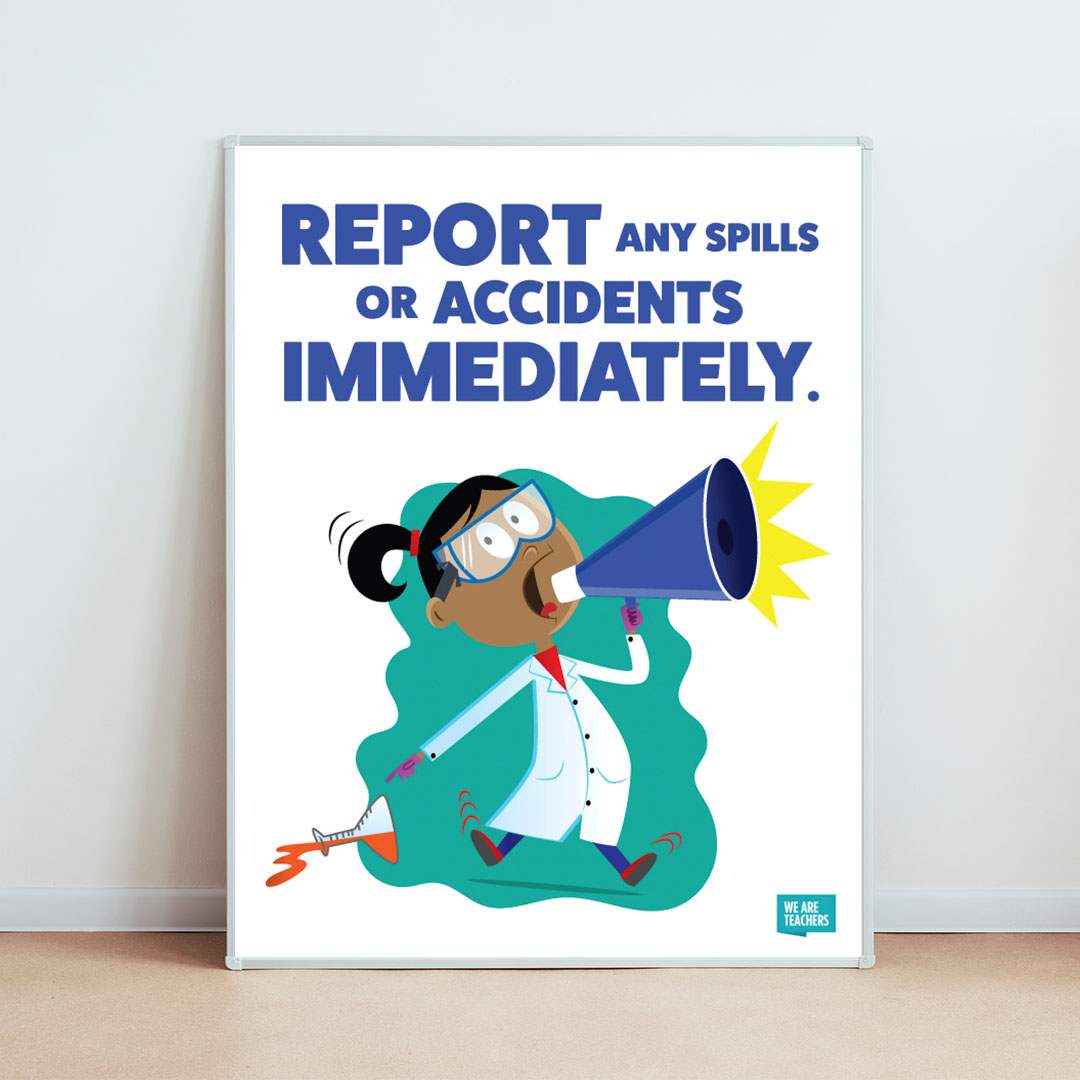
WeAreTeachers
Make sure students know they won’t get into trouble for accidental spills or breakages. If they’re worried about consequences, they might keep quiet, and that’s the worst thing they can do. Encourage them to speak up right away if there’s an accident, and thank them publicly when they do.
7. Clean up thoroughly and dispose of waste appropriately.
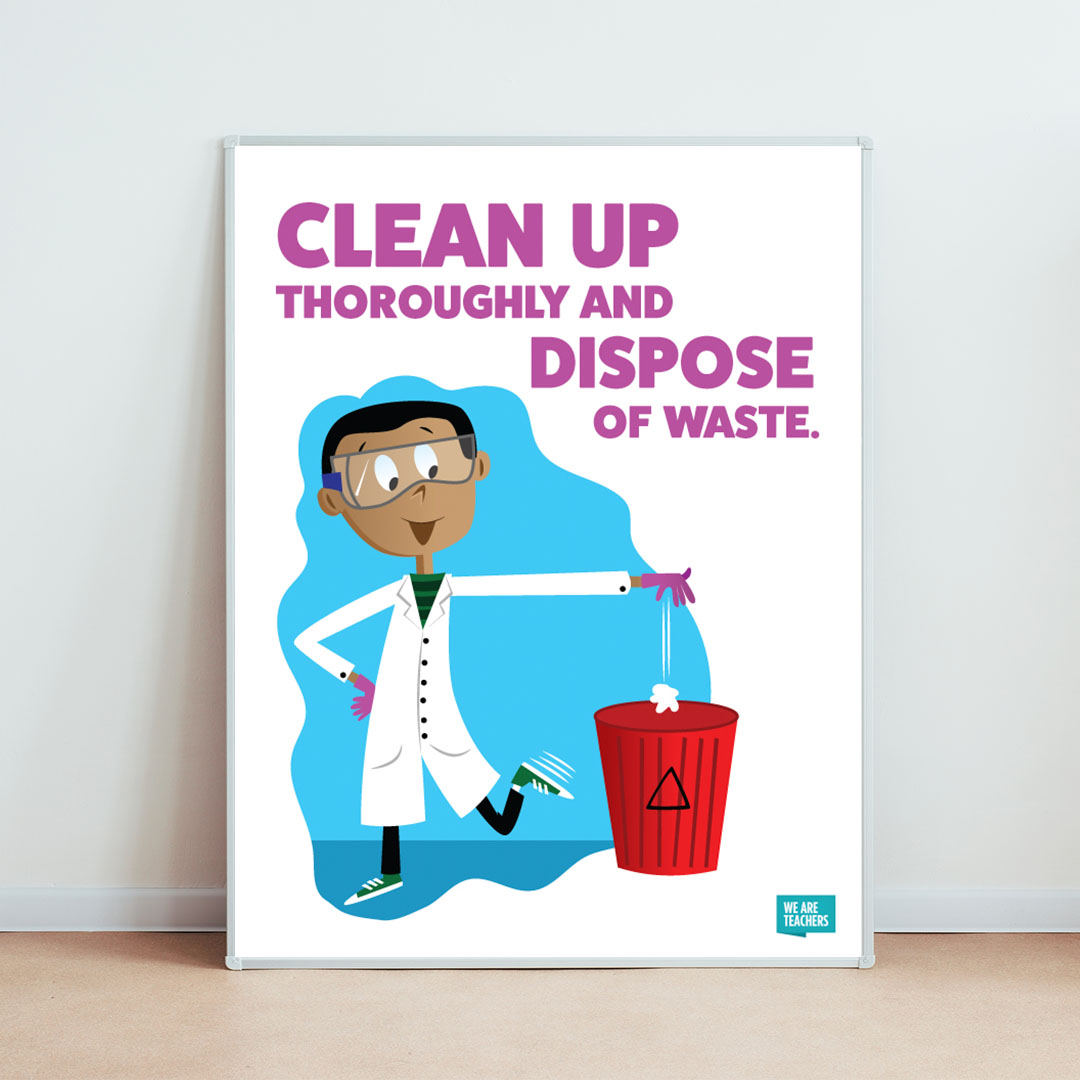
WeAreTeachers
When their time in the lab is done, show students where to safely store unused supplies and how to completely clean their stations. Ensure they know how to dispose of any hazardous materials and always finish by washing their hands thoroughly.
More Lab Safety Rules
The lab safety posters above cover all of the major rules, but here are a few more general rules you may want to cover with your class.
Work carefully, responsibly, and with respect for yourself and others.
When kids are up and out of their seats, they often tend to fool around and be silly. The lab’s not the place for that though. Students need to take things seriously and remember that they’re responsible not only for their own safety, but that of everyone else around them.
Pay attention to and follow all directions exactly.
In the lab, it’s more important than ever that kids know what they’re doing before they start. Remind them to ask questions any time they’re unsure about something, rather than just guessing. And no playing mad scientist! Going rogue in the lab can be extremely dangerous, so let students know you have zero tolerance for that kind of thing.
Leave all lab supplies and equipment in the lab when you’re done.
It’s going to be very tempting for some students to walk off with lab equipment, chemicals, or even dissected animal parts (so gross, but some kids can’t seem to help themselves). But the lab is kind of like Las Vegas—everything that happens in the science lab needs to stay there. Containing potentially dangerous items in one space is the only way to keep the whole school as safe as possible.

